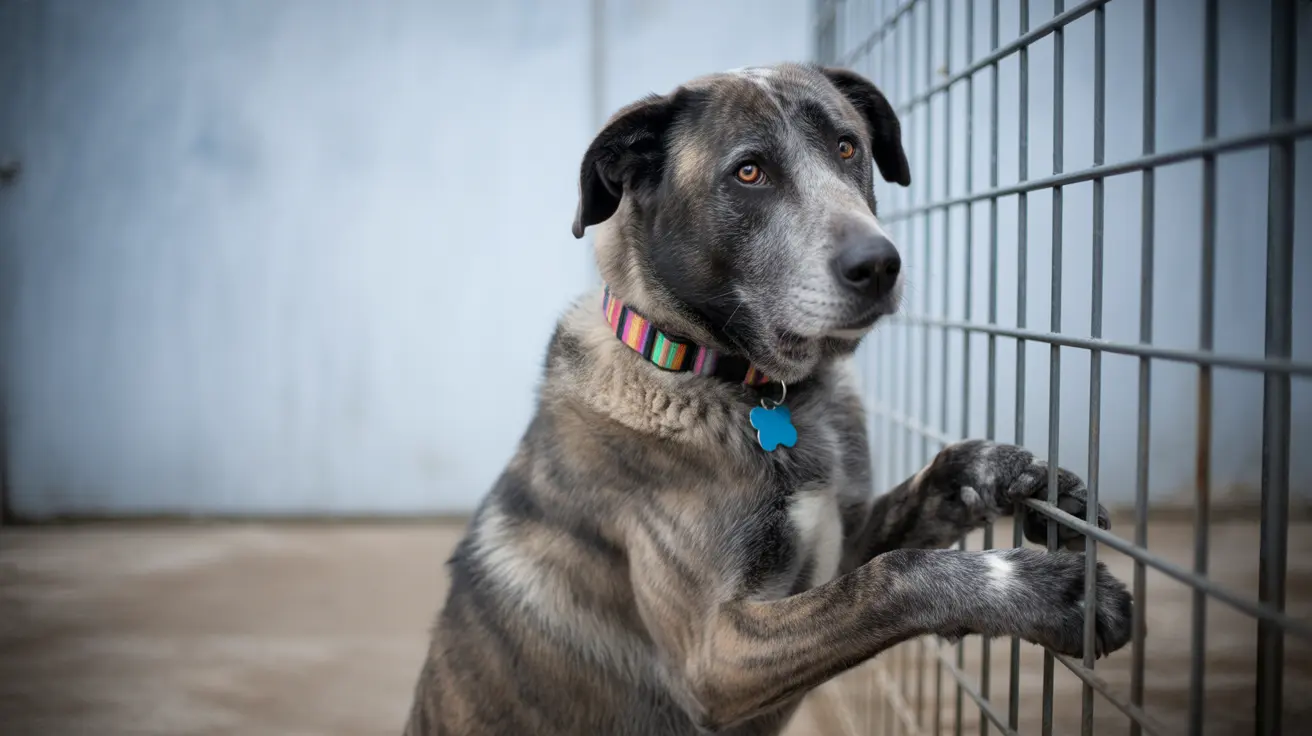When a dog suddenly loses vision, optic neuritis could be the culprit. This serious inflammatory condition affects the optic nerve, which carries visual information from the eye to the brain. Understanding this condition is crucial for pet owners, as early detection and treatment can make the difference between vision recovery and permanent blindness.
In this comprehensive guide, we'll explore everything you need to know about optic neuritis in dogs, from its causes and symptoms to diagnosis and treatment options.
Understanding Optic Neuritis in Dogs
Optic neuritis occurs when inflammation attacks the optic nerve, disrupting the transmission of visual signals to the brain. This condition can affect one or both eyes and typically develops suddenly, leaving pet owners concerned about their dog's unexpected vision changes.
While relatively uncommon, optic neuritis primarily affects young to middle-aged dogs, with no specific breed predisposition. However, medium to large breeds may show a slightly higher occurrence rate.
Common Causes and Risk Factors
Several underlying conditions can trigger optic neuritis in dogs:
- Immune-mediated diseases (most common cause)
- Meningoencephalitis of unknown etiology (MUE)
- Granulomatous meningoencephalitis (GME)
- Infectious diseases
- Cancer (neoplasia)
- Orbital inflammation
- Drug toxicity (particularly from ivermectin)
Recognizing the Signs of Optic Neuritis
Early detection is crucial for successful treatment. Watch for these warning signs:
- Sudden vision loss in one or both eyes
- Bumping into furniture or walls
- Reluctance to navigate stairs
- Difficulty finding toys or treats
- Dilated pupils that don't respond to light
- Signs of eye pain or discomfort
- Disorientation or confusion
Diagnosis Process
Veterinarians use several methods to diagnose optic neuritis:
- Comprehensive eye examination
- Pupillary light reflex testing
- Electroretinography (ERG)
- MRI imaging
- Blood tests
- Cerebrospinal fluid analysis
- Infectious disease screening
Treatment Approaches
Treatment typically involves:
- High-dose corticosteroids for immunosuppression
- Additional immunosuppressive medications when needed
- Targeted therapy for underlying conditions
- Regular monitoring and dose adjustments
- Long-term management plans
Recovery and Prognosis
The outlook for dogs with optic neuritis varies significantly. Studies show that approximately 30-64% of dogs experience partial or complete vision recovery when treated promptly. However, success rates depend heavily on:
- Speed of diagnosis and treatment initiation
- Underlying cause
- Severity of inflammation
- Individual response to therapy
Frequently Asked Questions
What are the signs and symptoms of optic neuritis in dogs?
Sudden vision loss is the primary symptom, along with bumping into objects, disorientation, dilated pupils, and difficulty finding toys or treats. Dogs may also show signs of eye pain and appear confused in familiar environments.
How is optic neuritis diagnosed and treated in dogs?
Diagnosis involves comprehensive eye examinations, MRI imaging, blood tests, and other diagnostic procedures. Treatment typically consists of immunosuppressive therapy with corticosteroids and management of underlying conditions.
Can a dog recover vision after being diagnosed with optic neuritis?
Yes, many dogs can recover vision, especially with early treatment. Studies show 30-64% of dogs experience partial or complete vision recovery, though success rates vary based on individual cases and treatment timing.
What causes optic neuritis in dogs and are certain breeds or ages more at risk?
The most common causes are immune-mediated diseases, infections, and cancer. While no specific breed is exclusively predisposed, medium to large breeds show slightly higher occurrence rates, and the condition typically affects young to middle-aged dogs.
What should I do if my dog suddenly goes blind and I suspect optic neuritis?
Seek immediate veterinary care, as early intervention is crucial for the best chance of vision recovery. This condition is considered a medical emergency, and prompt treatment significantly improves the prognosis.
Conclusion
Optic neuritis in dogs requires swift action and proper medical intervention. While the condition can be serious, many dogs respond well to treatment when diagnosed early. If you notice any sudden changes in your dog's vision or behavior, don't hesitate to contact your veterinarian immediately.
Understanding the signs and acting quickly can make the difference between temporary and permanent vision loss. With proper care and management, many dogs can maintain a good quality of life, even if some vision changes persist.






